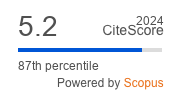Article | Open Access
A Complex Border: Intractability and the Physical Roots of Discursive Legitimations in Cyprus
| Views: | 2164 | | | Downloads: | 1700 |
Abstract: The Cypriot conflict is one of the most intractable conflicts of the modern era, and the collapse of complexity among the actors in the conflict—mainly the Republic of Cyprus, North Cyprus, and Turkey—appears to be the main cause of the continued “no war, no peace” state. Subsequent socio-psychological self-organization among these actors then produces conflict-perpetuating feedback loops and dynamics. These dynamics include identity narratives, narratives of “the other,” and narratives of the nature of the conflict, which, at the grassroots level, can legitimize ongoing engagement in the conflict, whereas peace is painted as an undesirable and undeserved/unjust compromise. Given this, there is a lack of root narrative research on the Cypriot case; less still are works connecting intractability in the Cypriot conflict to the border dynamics in Cyprus. Indeed, border studies indicate that borders can function as both symbolic and physical attractors for the conflict, for they may become fonts of past and present traumas and grievances as well as direct obstructions towards building cross-cutting bonds. As such, there is a need to increase our scholarly understanding of how the border between Cypriots affects both the conflict dynamics and, therefore, the success of peace processes within the context of the Cypriot conflict. This article will analyze the socio-political mechanics as well as prevalent narratives regarding the conflict on both sides of Cyprus to locate the dominance and impact of the border and to hypothesize how physical barriers and unaddressed grievances can perpetuate conflict and undermine peace negotiations.
Keywords: borders; conflict resolution; Cyprus; intractability; root narrative theory
Published:
© Hilmi Ulas. This is an open access article distributed under the terms of the Creative Commons Attribution 4.0 license (http://creativecommons.org/licenses/by/4.0), which permits any use, distribution, and reproduction of the work without further permission provided the original author(s) and source are credited.


